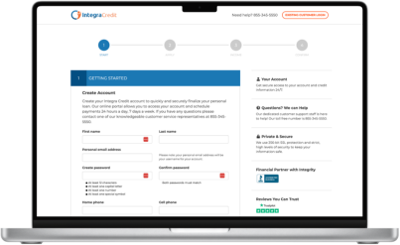Most people know that saving money is an essential part of building a secure financial future. It’s simple to acknowledge but the reality of saving money is quite a bit more complicated. How much money should you be saving each month? Is there a set dollar amount you should be putting away? What percentage of your income will be enough to save up for retirement?
With such an emotionally charged topic, you need clear and simple advice from the experts. So keep reading to figure out approximately how much money you should save each month, and why it’s important.
The Importance of Saving Money
Every person has different motives for wanting to save money. Are you hoping to buy a home? Strategizing for an early retirement? Do you want to pay for your children’s college education? These dreams all require savings and planning.
In addition, it’s important to build a cushion in case of life emergencies or unexpected setbacks. Are you prepared for an unforeseen medical expense? A problem with your home plumbing? An accident that wrecks your car? You can’t predict the curveballs life will throw your way. However, you can prepare for the unexpected by having a monetary reserve that makes the catastrophes less financially catastrophic.
Saving money is also the antidote for accruing debt. If you’ve got existing student loans or credit card debt, finding ways to pay that debt off off is essential.
How Much Should I Save Each Month?
While we wish that there was an easy, across-the-board answer to this question, the amount of money you save per month is a personal decision. However, one popular benchmark is the 50/30/20 rule.
What is the 50/30/20 Rule?
This rule suggests putting 50% of your budget towards essential spending, such as food and rent, 30% of your budget towards discretionary or non-essential spending, and saving 20% of your after-tax income every month.
For example: If you earn $4,000/month after taxes, you would allocate:
- $2,000 (50%) to rent/mortgage, food, healthcare, transportation, debt payments, etc.
- $1,200 (30%) to discretionary spending such as entertainment, vacations, or hobbies
- $800 (20%) to savings
Some experts also suggest dividing that 20% up further, by allocating 15% to retirement savings and 5% to short-term savings.
This can be an effective way to earmark your monthly earnings. However, 50/30/20 is not a one-size-fits-all number. No one should force their budget to fit this model if it doesn’t make sense for their household.
So how do you determine how much to save for yourself?
How to Plan Your Monthly Savings
Brainstorm Your Goals
Start with these questions to help solidify your savings approach:
- What are your short- and long-term financial goals?
- Are there major purchases you’re hoping to make in the future?
- When are you hoping to retire? Are your savings where they need to be to make that possible?
- Do you have an emergency fund? How large would you like this to be?
The more specific you can get when defining your financial goals, the easier it will be to set your timeline and strategy.
Evaluate Your Current Finances
Next, take stock of your current financial situation. Be honest with yourself—conduct a thorough financial inventory.
Add up your sources of income and subtract your expenses to calculate how much you can realistically save. Take stock of your current non-essential expenses. Do you really need everything you’re spending your discretionary money on?
If you’re looking to save for retirement, also ask yourself at what age you’re hoping to retire, if you can receive Social Security benefits, and other such questions to ask yourself before retiring. For long-term savings goals, try using a savings goal calculator to see how on track you are.
Set A Savings Goal
Now that you know what you have and where you want to go, decide how much you want to allocate to each goal per month. You should also investigate any savings plans your current employer might offer. Opting into a 401k plan or pension plan is a very effective way to save through systems that were created for that express purpose.
Take Action – Decide Where to Put Your Savings
Start saving! But don’t forget the logistics: it’s also important to decide where to keep your savings. Savings accounts are standard, but you may also consider opening a money market account, a Roth or traditional IRA, or an independent brokerage account.
When deciding where to keep your savings, think back to your goals. Are you establishing an emergency fund? Then you may want to keep your money in an account that is easily accessible. Are you a late-starter who is hoping to build up savings for retirement rather quickly? Then you may be better suited with a high-yield CD account, even if it’s more difficult to withdraw that money on a whim.
FAQs
Would A Budget Help Me Save Each Month?
A budget is an effective way to start setting financial goals and establishing concrete numbers to aim for each month.
Does My Age Matter While Trying to Save?
Anyone can set a savings goal. However, age does play a larger role when setting a retirement saving strategy. The older you get, the more critical it becomes to save.
Integra Credit Offers Assistance
If you need a loan to cover expenses while your saving goals are still in progress, Integra is ready to help you out. Apply today or contact us with inquiries.
Apply in minutes, quickly & securely
- Complete an online application
- Receive a decision quickly
- Review and sign the agreement
- Get cash directly into your bank account





